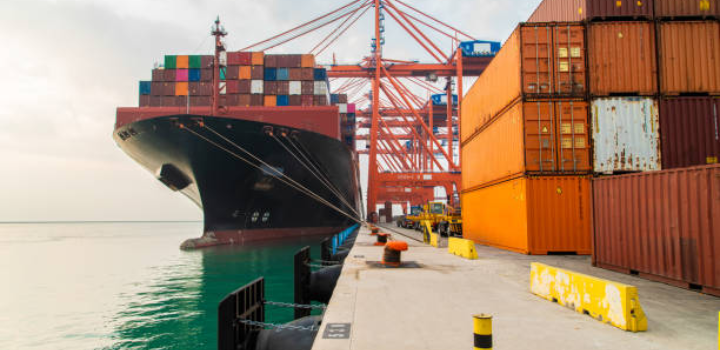For businesses engaged in international trade, minimizing delays, improving compliance, and building credibility with customs authorities is crucial. One of the most effective ways to achieve this is through AEO Registration. The Authorized Economic Operator (AEO) program, introduced by the World Customs Organization (WCO), recognizes companies that follow secure and reliable supply chain practices. Among the different categories, AEO T2 Registration holds special importance for importers and exporters who want smoother clearance processes and stronger recognition.
This guide explains what AEO is, the benefits of registering, how to apply for AEO T2, and why it can transform the way businesses handle trade.
What is AEO Registration?
AEO Registration is a certification process that validates businesses as trusted entities in the international supply chain. By applying, companies demonstrate their commitment to customs compliance, financial stability, and security standards. Once approved, they enjoy faster clearances, fewer checks, and higher credibility in cross-border trade.
The AEO program has three tiers – AEO T1, AEO T2, and AEO T3. Each tier offers additional benefits, with AEO T2 Registration being ideal for businesses seeking advanced facilities and smoother international recognition.
Why AEO T2 Registration is Important
AEO T2 Registration goes beyond basic compliance. It signals that a business has robust systems in place for safety, record-keeping, and customs procedures. This level is generally applicable for importers and exporters who handle moderate to large volumes of shipments and want reduced intervention from customs authorities.
Key advantages of AEO T2 include:
- Priority treatment at ports – Shipments move faster through customs.
- Reduced documentation checks – Fewer delays caused by unnecessary scrutiny.
- Recognition by global customs administrations – Many countries acknowledge AEO T2 status.
- Lower risk scores – Customs authorities treat certified businesses as trusted.
- Competitive edge – Enhances the company’s reputation among global partners.
Eligibility for AEO Registration
Not all businesses qualify automatically. To be eligible for AEO Registration, companies must fulfill specific requirements such as:
- Operating as an importer, exporter, customs broker, or logistics provider.
- Having a clean record with customs authorities.
- Maintaining proper accounting and logistics systems.
- Demonstrating financial solvency.
- Implementing strong internal controls and supply chain security measures.
For AEO T2 Registration, businesses must provide detailed compliance records and proof of operational reliability for at least three years.
Step-by-Step Process of AEO T2 Registration
- Application Submission
Companies need to apply through the official customs portal by submitting the AEO form. - Document Preparation
Required documents include financial statements, compliance reports, security protocols, and trade activity details. - Verification & Site Audit
Customs authorities conduct background checks and may visit company premises to evaluate procedures. - Approval & Certification
Once all requirements are verified, the business receives its AEO T2 Registration certificate. - Renewal & Compliance Maintenance
Certification must be renewed periodically, and businesses must continue meeting AEO standards.
Benefits of AEO Registration and AEO T2 Registration
1. Faster Customs Clearance
Shipments face minimal interruptions, reducing transit time significantly.
2. Cost Efficiency
Reduced demurrage charges, lower warehousing costs, and less paperwork lead to savings.
3. Global Recognition
AEO T2 Registration is recognized by multiple customs administrations worldwide, improving cross-border trade relationships.
4. Risk Reduction
Certified businesses are less likely to face penalties or compliance disputes.
5. Business Growth
With credibility and trust, companies attract more partners and expand into new markets.
Documents Required for AEO T2 Registration
- Copy of Importer Exporter Code (IEC).
- Financial records for the last three years.
- Details of customs compliance history.
- Supply chain security procedures.
- Company profile and trade data.
Common Challenges in AEO T2 Registration
While the benefits are clear, businesses often face hurdles such as:
- Lengthy documentation process.
- Lack of awareness about eligibility criteria.
- Internal system upgrades needed for compliance.
- Time taken for verification and site inspections.
However, with proper guidance and professional assistance, these challenges can be handled effectively.
Why Businesses Should Not Delay AEO Registration
Global trade regulations are becoming stricter, and customs authorities are prioritizing secure supply chains. Without AEO Registration, businesses may face frequent delays, higher compliance checks, and reduced trust from international clients. On the other hand, AEO T2 Registration provides businesses with recognition, smoother operations, and competitive advantage.
How Professional Assistance Can Help
Many companies hire consultants or agencies to streamline the AEO process. Experts help with documentation, compliance checks, audits, and submission of applications. This ensures faster approval and reduced chances of rejection.
Conclusion
AEO Registration is not just a certification—it is a long-term investment in compliance, efficiency, and credibility. For businesses dealing with imports and exports, AEO T2 Registration offers a direct path to smoother customs procedures, international recognition, and enhanced trade opportunities.
By securing this certification, companies can strengthen their supply chain, reduce delays, and position themselves as trustworthy global trade partners.
You may also like
-
Automatic Fruit Wine Bottling Line for Small Wineries: A Complete Guide
-
How Does Plywood HSN Code Decide the GST Rate for Traders and Manufacturers?
-
POS Terminal Type: Which Is Best for Your Business?
-
How to Choose Fixed and Portable Gas Monitors for Industrial Gas Detection?
-
Simplifying Trademark Registration in Hong Kong: What Businesses Need to Know

